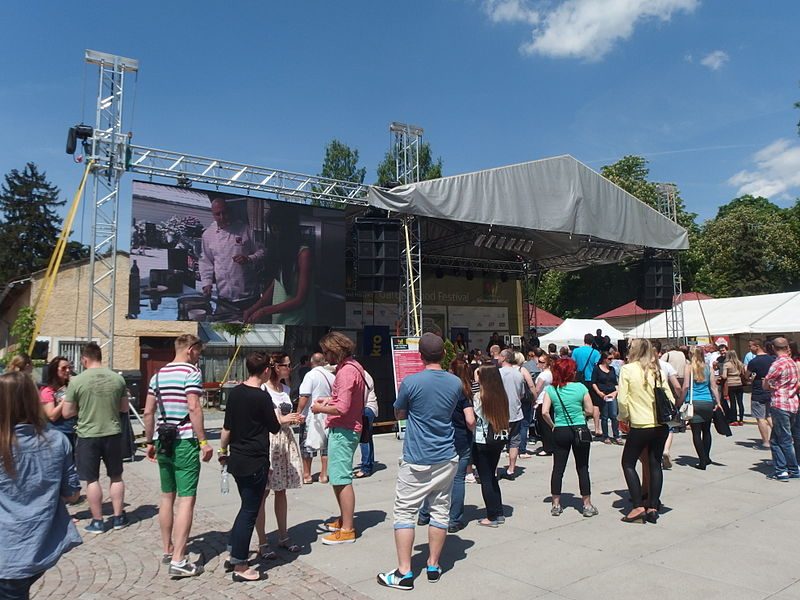This post is in answer to a question Alexa posed awhile back. Yes, it is possible to add video as well as images to a map you’ve created using GoogleMaps. Here’s how: click on the appropriate pin that you’ve placed on your map –> the camera icon –> YouTube url –>paste in the url –>Select –> Save. You can attach several images and a video to the same pin, allowing your viewers to easily click through them.
Category: Uncategorized
Checklist for Web Sites: Tips from Writer/Designer
Treasury of Ethnographic and Festivals-related Terms
List of Students’ Project Sites
Accessible WordPress Themes
As more and more content and social knowledge creation takes place on the web, conscientious people are designing their sites to be digitally inclusive. Accessibility means that the site is readable by screen readers such as Jaws. While it is possible to customize an existing WP template to make it accessible, its much easier to choose a theme that was built with accessibility in mind from the start. You can find a list of accessible WP themes here. WordPress has issued a draft of an accessibility manual, which you can consult if you’d like to learn more.
Fair Use & Ethical Citation Principles
As you start to think about what you’d like to include on your project site, bear in mind that, for any image, audio file, piece of written text, or video, you need to seek permission from the creator (and/or owner) and properly cite it. Since you are creating sites that fall under the category of “educational,” you have a bit of leeway here: Fair Use. Fair Use under U. S. copyright law allows you to take a small portion of a work, alter it and/or give it additional context (i.e., annotate it or quote from it), and use it as long as you cite the original source: the creator and/or owner of that content. To take an example, let’s say you would like to use a brief, 30 second excerpt of a musical performance that took place on your university campus. You would cite the musicians, as well as the source of the audio file: the Special Collections archive at your university. It would not, in this case, be necessary to track down each of the musicians and secure written permission from them.
Ideally, the material you are using will be licensed through Creative Commons: there will be a CC BY icon which tells you exactly how the creator wishes to have her or his work cited. Virtually all of the content in Wikimedia Commons is licensed in this way (and, once you have finished your project sites for this semester, you should take advantage of the free, easy-to-follow steps through Creative Commons to license your own sites).
However, there is a great deal of content on the web that is not licensed through Creative Commons, and so citing it correctly takes a bit more thought and care. You can use the interactive Fair Use Evaluator tool to determine whether your use of a particular piece of web content is legitimate or not. Here is a brief video explanation of key principles of Fair Use. Lastly, an archivist and copyright expert at Sonoma State, Paula Hammett, sent me this flowchart on copyright and ethical citation principles, which can be useful as well.
Where to insert your credits for material: usually, if possible, all images and other files should be captioned: photographer/creator, title, year, and location of the image. If it’s not convenient to add the credit right underneath the image (as, for example, on your header images), then create a Credits page on your website and list all pertinent information there. If you are citing from a written text, you can insert author and page number in parentheses in your text and then provide full bibliographic information in MLA format on your Works Cited page at the end of your project site.
If you have any questions about citing material, whether on the web, in library collections, or elsewhere, try consulting with your university librarians or as Dr. Snow or myself.
Designing your Website
Here is some information about creating clear, user-friendly web pages. Although WordPress templates are already designed to be functional and easy to read, you may benefit from reading about Presenting Information Architecture in this Web Style Guide. The information about how we read websites (near the bottom of the guide) is especially useful.
Ultimate Tag Cloud Plugin
If you’re curious about creating tag clouds, add the Ultimate Tag Cloud plugin to your blog. From the Dashboard –> Plugins –> Add New –> Ultimate Tag Cloud –> Activate. Then, from Appearance –> Widgets –> drag the Tag Cloud plugin to the right side of the page to get it where you’d like it to appear: either on your sidebar or at the bottom of the page. Once you’ve done that, you can click on the “Basic Appearance” or “Advanced Appearance” tabs of the plugin to configure its shape, coloring, etc.
Sample Interview Consent Form
Update 3/15/16
I got in touch with Aaron Speight (Truman’s digital collections librarian) and Amanda Langendoerfer (Truman’s Head of Special Collections and Archives) and will be meeting with them tomorrow afternoon. I also contacted Adam Boyles (the current PMA historian) about getting together to show me any documents that may be helpful (I mentioned possibly doing an interview as well, […]

